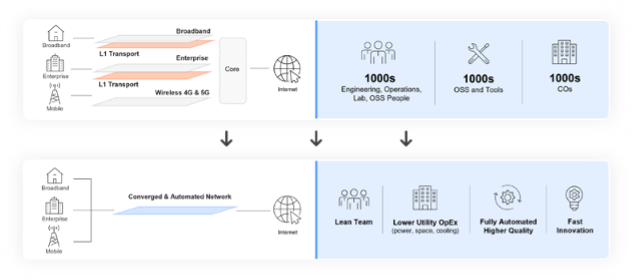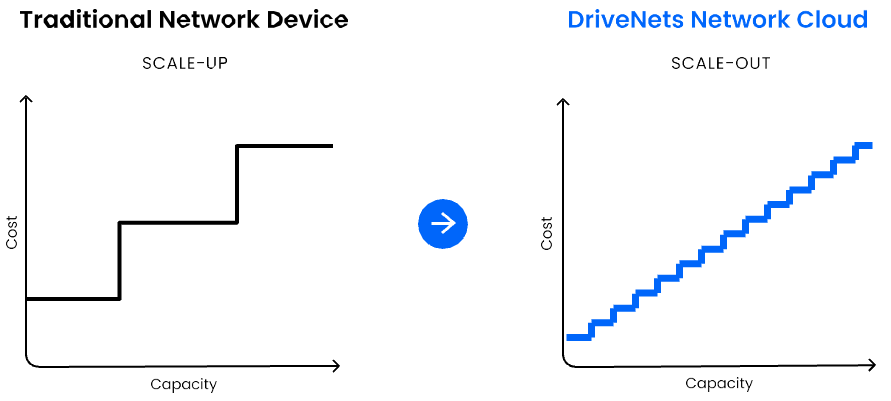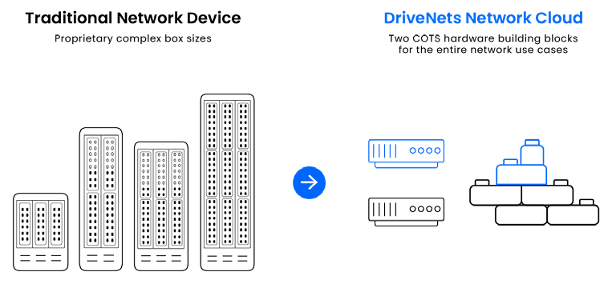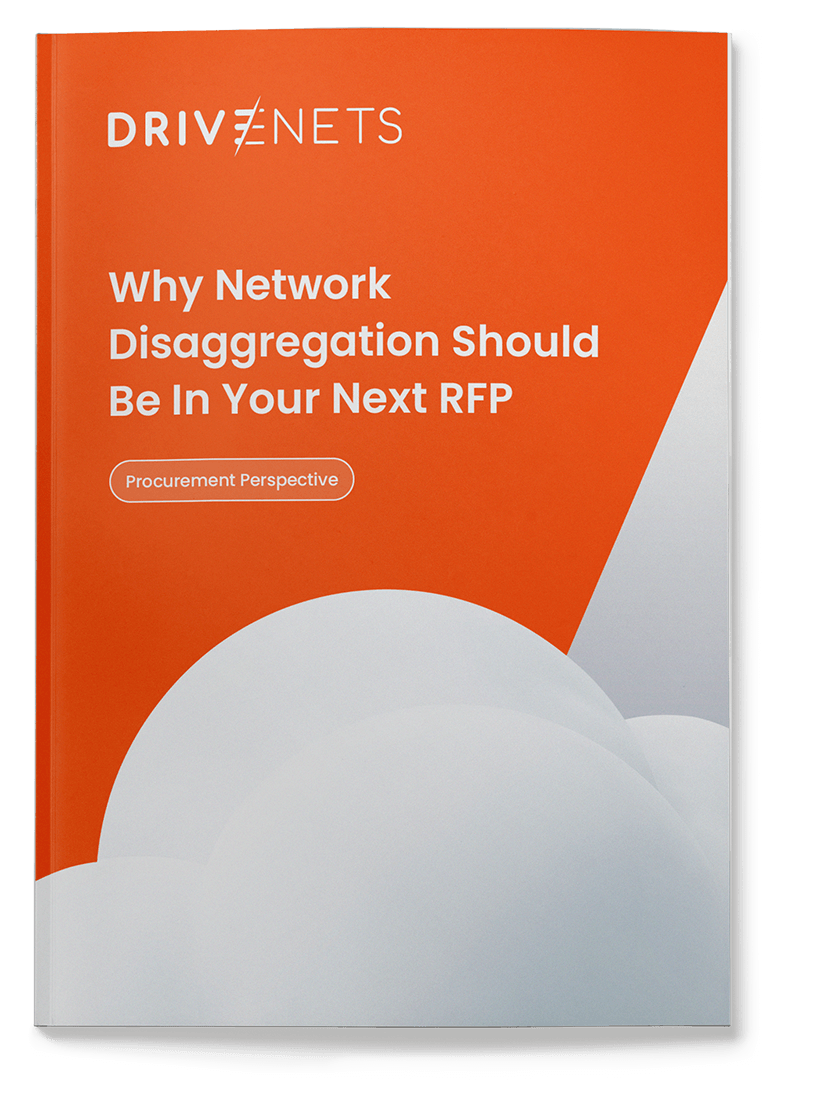Why Network Disaggregation Should Be In Your Next RFP – POV Procurement
New Cost Structure
From a procurement perspective, the current state of service provider (SP) networks poses significant challenges due to their organic growth over decades and through multiple acquisitions. These legacy networks, characterized by siloed systems, dedicated operational tools, and manual processes, create inefficiencies, duplication of efforts, and increased operational costs. Modernizing these networks is critical to reducing complexity and addressing the operational and financial burdens associated with their maintenance.
Advancements in technology now enable simplified, automated, and converged networks, reducing hardware needs, power usage, and physical sites while streamlining operations with automation and AI-driven tools. This transformation improves cost and efficiency.

New cost structure – reduced OpEx
- Reduce hardware footprint and power usage by collapsing network layers.
- Reduce the number of sites / data centers needed to operate the network.
- Simplify network operations with AI-driven automation tools.
Top-line growth
- Enable the introduction of new services more rapidly and revenue generation due to
software-based networks.
Procurement’s role in driving these initiatives is crucial, focusing on solutions that reduce OpEx and
enable faster service launches. By adopting modern, software-centric systems, procurement
can ensure SPs achieve cost savings, improved performance, and sustainable growth.
Cost Avoidance Measures on a Network Scale
When a networking box approaches 70% utilization capacity, your network team will urgently ask for more budget for a bigger box (lift-and-shift). Procurement needs to implement cost avoidance measures on a network scale, paying only for the network capacity actually used. DriveNets Network Cloud disrupts traditional network economics by enabling the alignment of network costs with capacity growth.
By stacking low-cost white boxes for incremental capacity upgrades – like in cloud environments – you can scale out whenever needed, avoiding unnecessary up- front investments.

Make Router Inventory Management Easy
Service providers pay a hefty 20%-300% premium for branded network devices, which directly impacts target pricing. Today’s traditional networks have on average, 10-15 different network device models supplied by 2-3 vendors! Hardware inconsistency complicates network planning and operations, adding soft costs to maintaining a robust supply chain. Also inventory costs grow, typically keeping an additional 10% in spare parts.
Common to all types of sites and network functions (from network routers to firewalls), DriveNets network architecture uses just two types of basic commercial- off-the-shelf (COTS) building blocks, available from multiple vendors. This significantly lowers the cost of maintaining inventory, while slashing the list of stock keeping units (SKUs) from hundreds to just a dozen.
By ensuring physical network infrastructure consistency, the number of hardware variations, software versions, and maintenance procedures drop, as well as operational expenses (OpEx).

Increase Supply Chain Robustness
Purchasing network equipment software and hardware from the same vendor weakens the procurement negotiations, eliminating the possibility of mixing and matching vendors.
DriveNets Network Cloud turns networks from hardware-centric to software- centric, leading to simpler, standardized hardware across all network services (core, aggregation, edge). On the hardware side, you can reduce costs by sourcing from multiple vendors and through economies of scale across all network services.
On the software side, service providers pay only for the features they need, either on a time-based, perpetual or subscription license (OpEx).
This frees operators from vendor lock-in, enabling them to rapidly leverage new technologies, swap components and platforms, and switch vendors. This mitigates exposure to supply chain disruptions and enables the adoption of new technologies that may have conflicted with the incumbent vendors’ proprietary technologies.
Proven Success Across Leading Operators
The traditional way of building service provider networks has been to purchase network devices as capitalized expenses over a period of 3-5 years. With DriveNets Network Cloud’s unique cluster architecture, you can protect your network investment against technological obsolescence, by extending your network solution longevity by years and lengthening the periods between your network bids. Built from an array of white boxes, DriveNets Network Cloud cluster can scale in capacity just like a cloud scales-out, by adding additional white boxes to the cluster array.
When new technology emerges (i.e. 800GE interface) there is no need to replace or write off the existing network cluster, but just add a new white box to the existing cluster with the new 800GE interfaces. There is no need for a complex forklift upgrade of the old chassis that doesn’t support the new 800GE technology or the additional costs of expensive service migrations.







